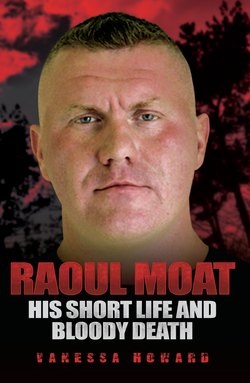Читать книгу Raoul Moat - Vanessa Howard - Страница 4
На сайте Литреса книга снята с продажи.
PROLOGUE
ОглавлениеWatch and see what happens
– from Raoul Moat’s Facebook page
When the end came, it seemed inevitable. How else could it end?
The figure was picked out in green using night-vision technology; he was lying on soaking wet grass as police dogs barked and officers shouted out into the darkness. The tension between those on the ground had been stretched out over six hours. Perhaps Britain’s most wanted man knew that this was the moment; one firm squeeze of the trigger and it would be all over.
Even amongst those who hadn’t followed the 24-hour news coverage, few would be surprised to wake on the morning of Saturday 10 July to hear that Raoul Moat had been shot and killed. He had been cornered on the side of the river bank in the now infamous town of Rothbury since seven o’clock on Friday evening. He had finally been surrounded by snipers as part of the police operation, the scale of which was almost unprecedented.
In the days leading up to these final moments, the public had learned more details about the resources that had been used to find Moat. Hundreds of officers from 15 police forces had been recruited for the hunt, specialist advice had been sought from the British Army, the Police National Search Centre, and even the heat-seeking technology of a £20m RAF Tornado jet had been employed. The final cost of the operation would mount to more than three million pounds. All to track one man.
There were those who thought the use of so much firepower was risible, news that armoured vehicles from Northern Ireland had arrived to patrol the quiet streets of Rothbury was remarked on as excessive. Yet when Moat went on the run, it was only four weeks after Derrick Bird had shot dead 12 people and injured 11 more in and around the quiet country lanes of Cumbria. How else could Northumbria Police have been expected to respond?
A madman was on the loose, a self-declared maniac; a man who had killed one man, seriously injured his former partner, and shot a police officer in the face. He had declared war on the police and, as the days of his week-long evasion unfolded, he threatened to shoot members of the public. The rules had changed he had warned in a taped message left for the police to find. The hunted had become the hunter. The authorities were under no illusion as to what Moat was capable of and he had made his intentions clear in a letter that he had handed to a friend in which he had stated: I won’t stop till I’m dead.
How had it come to this? What had driven one man to cause such terrible suffering to the families of his victims? Had he suffered a catastrophic breakdown or had the signs of his collapse been evident for years to all who had encountered him? What had turned a loving father into a monster, a man who would declare war on the police?
Perhaps this was no more than a freak event, something so rare as to offer little insight into what can destabilise an ordinary man.
Yet the truth, even as it emerges in a fractured and partial way, suggests something that has far-reaching and even terrifying implications. All the signs were there: this was a man who had already brought misery to the lives of others, a person who had known years of destructive rages and yet was also someone who had asked for help.
He knew that he suffered from what he described as ‘areas of fault’, dark parts of his psyche that he feared: rages that surfaced in him and that he could not control.
The youngster in the baby pictures, the plump-faced and bright-eyed boy, would would become a killer, a man his mother would no longer recognise. Step by step, he walked a path of destruction and no one helped him find another way. He wanted help. None came, or at least, if and when it did it was too little and too late. Now he would ensure that everyone would pay, that the whole world would learn his name and there was only one way it would end.
We know the name yet do we know other Raoul Moats? Other men in other communities waiting for the killer inside them to emerge and take control. For Moat is no one-off, his was not a isolated act of revenge. Other people whose thinking mirrors his are out there.
This book will reveal how disturbed minds such as Moat’s are formed and how, as a society, we need to understand why Moat is now an antihero to many. There is a dark undercurrent of disaffection that, should it settle in the mind of someone battling instability and grievances, can yield terrifying results.
